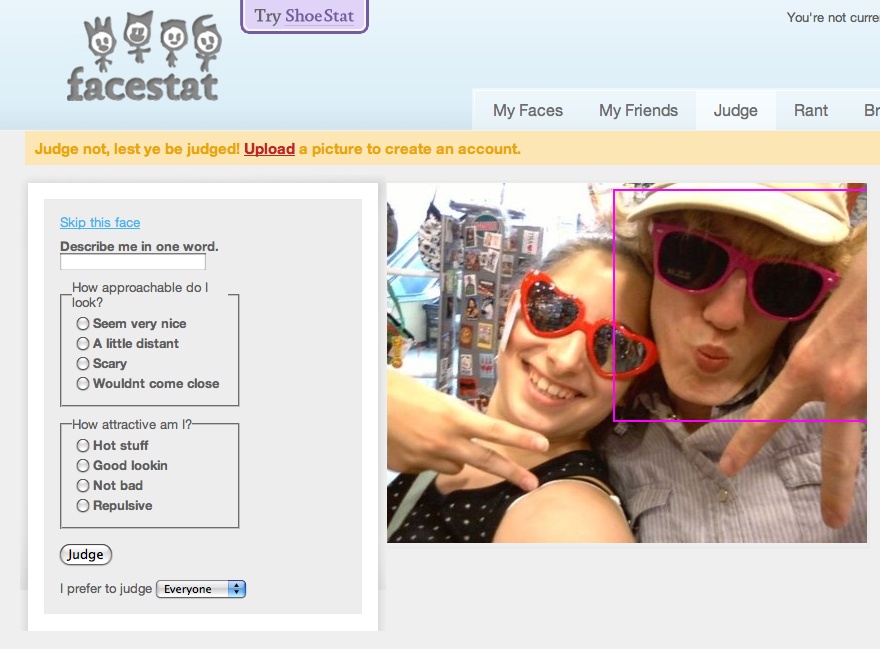Chapter 17. Superficial Data Analysis: Exploring Millions of Social Stereotypes
Introduction
HOW DO WE PERCEIVE AGE, GENDER, INTELLIGENCE, AND ATTRACTIVENESS? WHAT INSIGHT CAN WE extract from millions of anonymous opinions?
Last year we, with Chris Van Pelt, built the website FaceStat.com, where users can upload their own photos, as well as look at and judge photos of other people (see Figure 17-1). The site became surprisingly popular. More than 100,000 brave users have uploaded pictures of themselves, friends, relatives, enemies, etc., and more than 10 million judgments have been collected for preselected questions such as:
How old do I look?
Do you think I look smart?
Do you think I could win a fight with a medium-size dog?
Describe me in one word.
We like to call it "multivariate Hot-or-Not."

Figure 17-1. The FaceStat judging interface. (See Color Plate 58.)
Researchers in psychology and sociology have extensively studied stereotypes and how our appearances influence the way we are perceived. But no one has had access to such a large pool of data from such a diverse group of people. This data is much messier than a typical lab experiment, but can volume make up for a lack of control? In fact, real-world data might be most revealing: someone who thinks she's playing a game could be more honest than a college sophomore taking a survey in his Psych 101 course. ...
Get Beautiful Data now with the O’Reilly learning platform.
O’Reilly members experience books, live events, courses curated by job role, and more from O’Reilly and nearly 200 top publishers.

